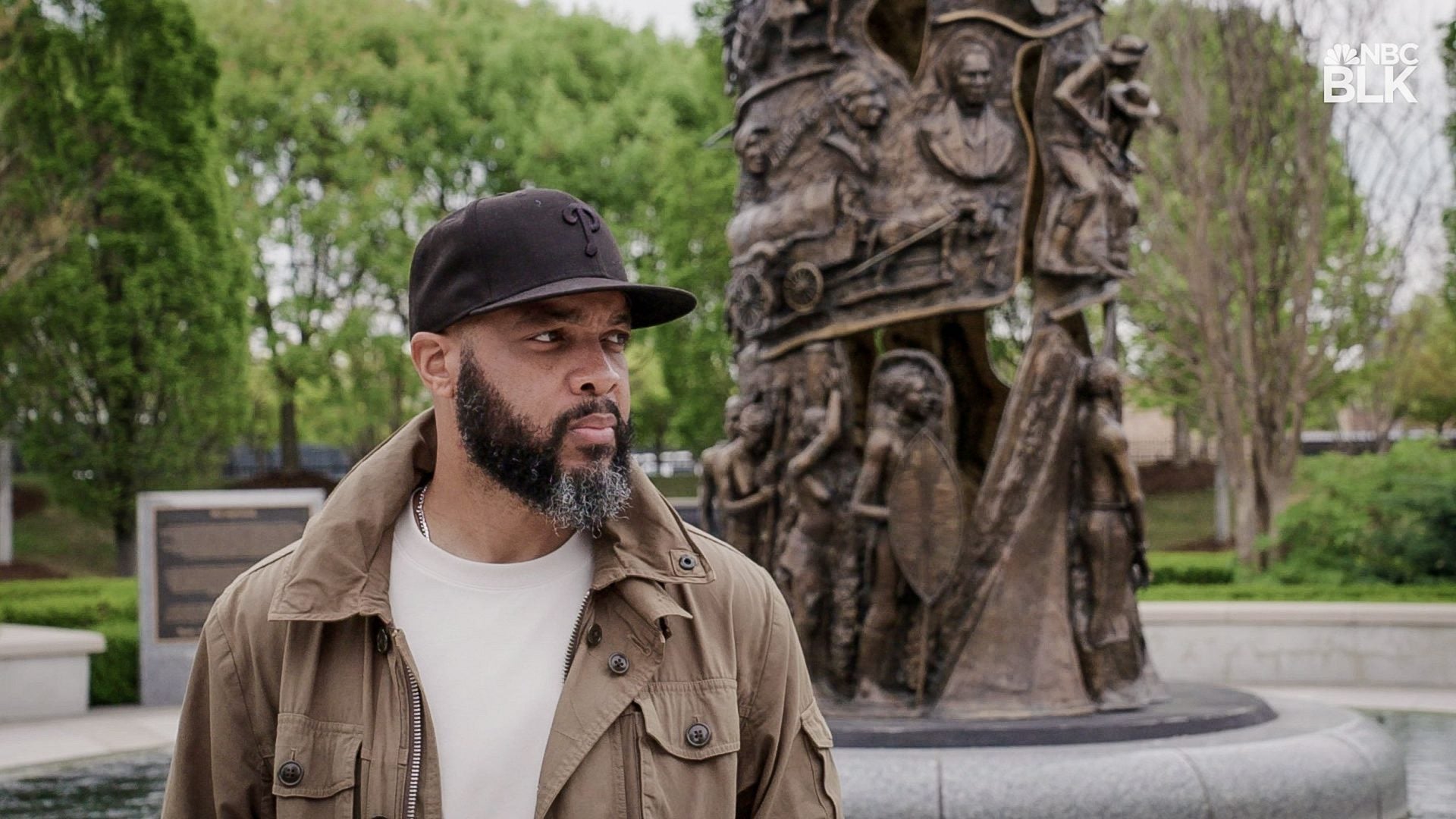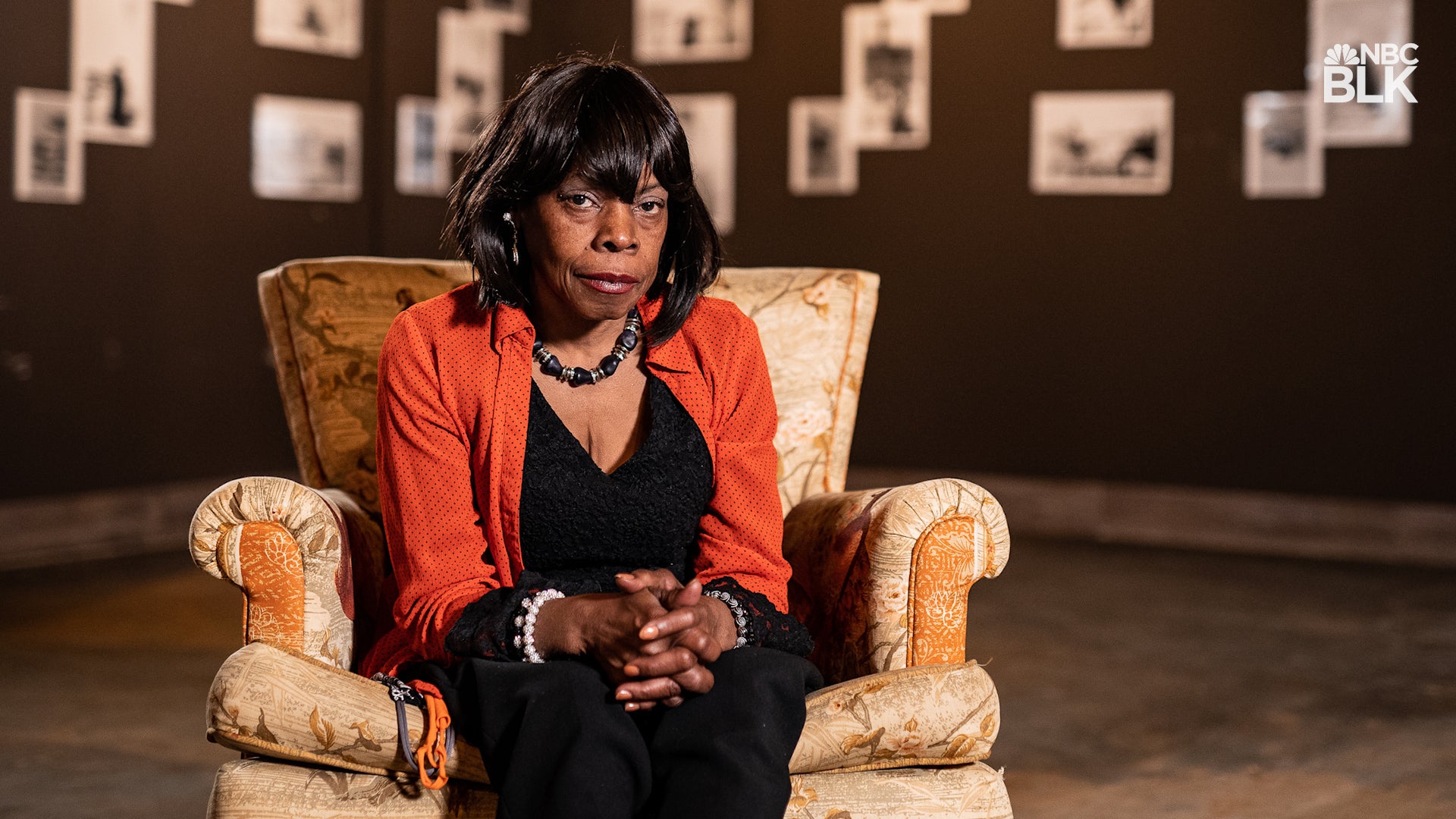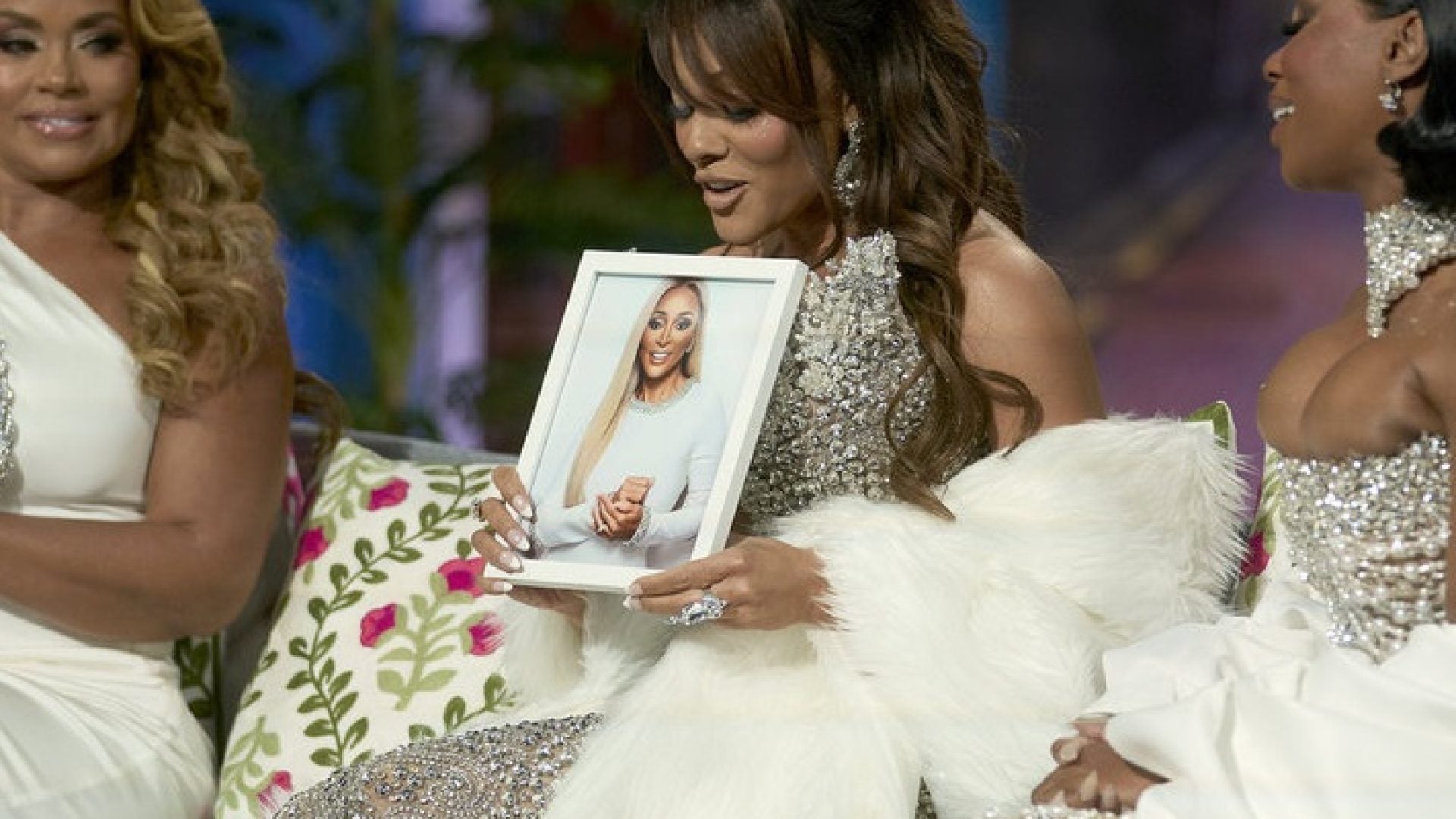
It’s hard to watch the new documentary “Blood on Black Wall Street: The Legacy of the Tulsa Massacre” and not feel the weight of the tragedy.
As I prepared to speak with Pulitzer Prize-winning MSNBC correspondent Trymaine Lee, who hosted the documentary as part of NBCU Universal’s slate of Tulsa coverage that began May 27, I realized it opened up a flood gate of questions that we simply couldn’t cover in the time we had.
The documentary excels at exploring both the larger, systemic forces that affect the Black Tulsa community and Black communities across the country and tragic details that leave your heart aching.
One story in particular, which the documentary includes, resonated with Lee. Eldoris McCondichie was nine-years-old when her mother awakened her. As Eldoris and her family fleed their home, she joined other Black families who ran up the town’s railroad tracks to escape. She heard the sound of bricks, stones, and exploding buildings along the way. “The bullets are bouncing off of the train tracks and stinging their feet,” her granddaughter Joi told Lee. “Bullets were just raining down over us, and I was so frightened I pulled away from my parents and ran into this chicken coop with all the other people,” Eldoris said in archival footage from 1999.

While Eldoris survived, many Black people did not. There are estimates that 100-300 people were killed.
“Blood on Black Wall Street” premieres at 11:45 ET on NBCNews.com and NBC News NOW.
This Sunday, May 30 it will also air on MSNBC at 10 pm ET, stream on NBC’s streaming service Peacock, and air on CNBC at 2 p.m.
Read below for more insights from Lee and how the 1921 event remains relevant today. The interview has been edited for length and clarity.
ESSENCE: Whenever I heard about the Tulsa Race Massacre growing up, it was always framed as a Tulsa Race Riot. Did you notice a shift where people started to reframe it as a massacre, and why do you think that shift happened?
Trymaine Lee: You know, I think Black folks, certainly Black folks who live in Tulsa, always knew there was no kind of riot. A riot implies that Black folks had played a role in their own demise. That it was just this mayhem on both sides. It’s kind of like “there were good people on both sides.” Where, in fact, Black folks have long known it was a massacre. I think it’s just more recently— because of the work of journalists and because we now have the language of systemic racism and white supremacy and we are in better position to have these kind of conversations.
WATCH: ESSENCE visits Tulsa to reflect on the 100 year anniversary of the Tulsa Race Massacre
ESSENCE: What I thought was pretty impactful about the documentary, among many things, is that it tells a larger story about certain events that we’re told are history and easy to freeze in time. Like, “1921, that’s 100 years ago!” But it spends the majority of the time bringing us to the present and saying, “this is what happened through urban renewal [in Tulsa]. This is what’s happening now through gentrification.” So can you just talk a little bit more about how those policies still exist?
TL: I think, first of all, we have to understand that we’re talking about a spectrum here. There isn’t just one moment where Black folks were oppressed, not just one moment where Black folks were enslaved, then the switch was flipped and all of a sudden we have full agency as American citizens. We’re still not at that point. So whether we’re talking about the hundreds of years of enslavement to an extension of that oppression in Jim Crow.
Those two days, May 31 and June 1 of 1921, were unspeakable atrocities where unspeakable violence happened. But then after that, as we understand, white supremacy is a feature of America, it’s not an aberration. There was any number of systems and policies and laws put in place to keep Black folks down. We saw after the mass murder, a denial of Black folks to recoup what was stolen from them.
Then you have the actual, violent economic dispossession of a people where their land was taken, placed in white hands, and [white families] were able to pass that on through generations and Black folks were never able to enjoy the benefits of that labor and network and everything they had built. Then into the mid 20th century, [you have] urban renewal, under the guise of revitalizing these communities. You have highways placed right in the middle of their communities, dividing this [Black Tulsa] community even further. And now even today, the footprint of Greenwood has shrunk to about half a block. Where you had hundreds of black-owned businesses, now you have less than two dozen. Right now these communities have been taken over and corporatized in certain ways.
But Tulsa is just one example of that. We could probably go from the East Coast to West Coast, and make make a stop in every state and find another example of some form of violence that extends from white supremacy, whether it be bloodshed, or “urban renewal,” or education, or any number of policies and tactics that have dispossessed Black folks.
ESSENCE: Going back to this idea of inherited trauma and inherited wealth, or the lack thereof. In the 1619 project, you did a piece on the racial wealth gap. Can you talk a little bit more about, not just Tulsa, but how policies like urban renewal and gentrification all over the country impact the racial wealth gap today?







TL: We want to make sure that we connect the past to the present. It’s clear that Black folks have not just dropped out of the sky in 2021 with just a 10th of the average wealth than the average white family, right? There was a moment during Reconstruction Black folks finally got a taste of freedom and citizenship. We are the only people in this country to have to start from scratch, from negative 10. We weren’t able to accumulate land en masse, which is the prime wealth generator in this country. And Tulsa is another clear example of violence sanctioned by the state, the removal of opportunity, and the removal of wealth.
ESSENCE: Along with being under a white supremacist system, we live in a capitalist system that ensures that there are winners and losers. One of the manifestations of this is the way the Greenwood district is being gentrified, so the sister in the film with the hair salon who is priced out. There are businesses that want to come in because they know the land has value. Tulsa’s Black unemployment race is twice that of white residents. The poverty rate is almost three times higher. And there aren’t enough Black businesses that could be created to resolve that. Do you have any thoughts about the role of capitalism in Tulsa’s story?
TL: As long as we continue to put profit over people, there will always be winners and losers in America, and we’ve decided it’s perfectly ok for Black people, poor people, and others to be the losers. [In slavery] we were the most valuable asset in this country–our bodies, our flesh, and bone. Blackness and our suffering has been accepted in this country, and capitalism without question has been a prime role in it.






